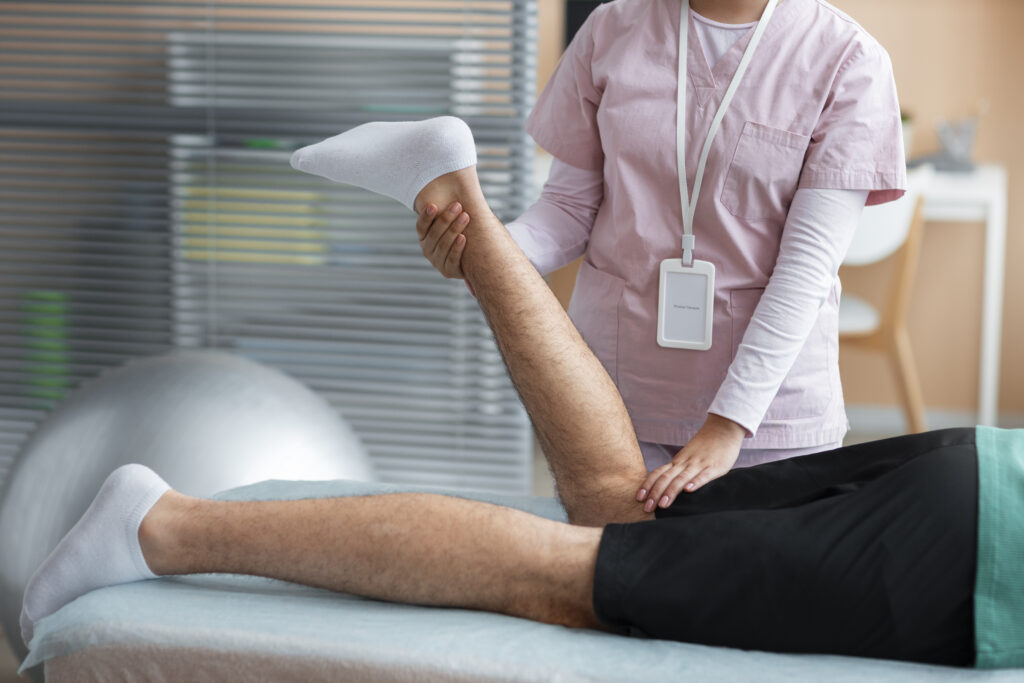
Efficient financial management is crucial for hip and knee orthopedic clinics seeking to maintain profitability, enhance operational efficiency, and achieve sustainable growth. Today, orthopedic practices face unique financial challenges due to regulatory requirements, rising costs, and evolving patient expectations. With a strategic approach, hip and knee clinics can optimize revenue, manage expenses, and improve cash flow to foster long-term success.
This article provides actionable financial management strategies for hip and knee orthopedic clinics. Clinic administrators and owners can apply these tips to ensure economic stability while delivering high-quality patient care.
Why Financial Management Is Essential for Orthopedic Practices
Effective financial planning is at the core of a successful orthopedic practice. Financial management strategies help clinics manage costs, maintain profitability, and allocate resources for future growth. These strategies are necessary for practices to handle issues like inconsistent cash flow, rising operational costs, and limited budget flexibility. For hip and knee clinics, the high costs associated with specialized equipment, surgical procedures, and staffing make financial oversight even more crucial.
Let’s explore specific financial management tips to help hip and knee clinics optimize their finances.
1. Develop a Comprehensive Budgeting Plan
Setting a Foundation for Financial Success
Creating a detailed budget is a foundational financial management strategy for any orthopedic clinic. Budgeting enables clinic owners and administrators to identify and track key revenue streams and expenditures, plan for future investments, and set financial goals. A comprehensive budget should include categories for:
Medical supplies and equipment: Given the high costs of specialized devices, understanding monthly and annual equipment expenses is essential.
Staff salaries and benefits: Include orthopedic surgeons, physical therapists, administrative staff, and any contract professionals.
Facilities and utilities: Cover rent, maintenance, and other facility-related costs.
Marketing and patient acquisition: plan outreach and digital marketing expenses, which are critical for clinic visibility.
Continuing education and training: budget for staff development to ensure the highest standards of patient care.
Accurate budgeting helps clinic leaders forecast expenditures, understand financial limitations, and make informed decisions.
2. Prioritize Cash Flow Management
Ensuring Liquidity for Consistent Operations
Managing cash flow is essential for hip and knee orthopedic clinics to cover operational expenses, mainly since orthopedic procedures and treatments may involve high upfront costs. Prioritize cash flow by:
Regularly monitoring receivables: Establish procedures to reduce accounts receivable days, ensuring timely payments from insurers and patients.
Automating billing and collections: leverage automated billing software to streamline invoicing, collections, and payment processing.
Encouraging upfront payments: Implement pre-appointment payment options for non-insured services to secure cash in advance.
Cash flow management can reduce financial strain, ensuring your clinic has the liquidity to support day-to-day operations.
3. Optimize Revenue Cycle Management (RCM)
Efficient Billing and collection for Financial Health
Revenue Cycle Management (RCM) is a critical component of financial management for orthopedic clinics, as it ensures timely revenue collection and minimizes delays. Effective RCM includes:
Training staff on coding and billing – Accurate billing ensures maximum reimbursement, reducing delays and the potential for rejected claims.
Implementing software solutions—Software that automates claims processing can enhance efficiency and accuracy, reducing the risk of revenue leakage.
Regularly auditing claims: Conduct routine audits to identify trends in denied or delayed claims and address the underlying causes.
An optimized RCM strategy helps ensure that hip and knee clinics receive timely payments, minimizing the financial gap between rendered services and collected revenues.
4. Manage and Monitor Costs Strategically
Reducing Overhead Without Compromising Quality
Cost management is crucial in orthopedic clinics, where high-cost equipment and surgical materials are standard. Some ways to manage costs strategically include:
Negotiating supplier contracts: Establish relationships with suppliers to secure discounts on bulk orders or extend payment terms.
Leasing equipment: For high-cost machinery, consider leasing instead of purchasing. Leasing lowers initial costs and can reduce tax liabilities.
Implementing energy-saving measures: Reducing utility costs through energy-efficient lighting, heating, and cooling can significantly lower expenses over time.
Balancing cost management with patient care requirements is essential, allowing clinics to maintain high standards while optimizing resource allocation.
5. Invest in Technology for Operational Efficiency
Leveraging Digital Tools for Better Financial Outcomes
Technological advancements can streamline financial management in hip and knee orthopedic clinics. Consider investing in:
Practice management software These systems centralize scheduling, billing, and record-keeping, saving time and reducing administrative burdens.
Financial analytics tools: Use financial reporting software to track KPIs such as net collection rates, average reimbursement per procedure, and monthly cash flow.
Telehealth and patient portals: Patient portals and telehealth solutions reduce in-clinic visits, improving efficiency and minimizing costs associated with in-person appointments.
Investing in technology boosts productivity and enhances patient experience, which can improve patient retention and long-term revenue growth.
6. Plan for Tax Efficiency and Regulatory Compliance
Minimizing Tax Liability and Staying Compliant
Orthopedic practices face complex tax and regulatory requirements. To ensure compliance and minimize tax liabilities:
Consult with tax professionals. Work with healthcare-focused accountants or financial advisors who understand the unique tax needs of orthopedic practices.
Maximize tax deductions: Claim all eligible deductions, including equipment purchases, continuing education, and operational expenses.
Stay updated on regulatory changes. Monitor healthcare regulations to ensure compliance with laws such as HIPAA and Medicare requirements.
Tax-efficient strategies reduce financial strain and allow hip and knee clinics to allocate more funds toward growth and operational improvements.
7. Diversify Revenue Streams
Expanding Services for Financial Stability
Relying solely on a limited range of services can be risky for any orthopedic clinic. To build financial resilience, consider diversifying revenue streams. This can include:
Offering new treatment options Expand into regenerative or physical therapy to attract new patient demographics.
Partnering with rehabilitation centers: Establish collaborative programs that bring post-surgery rehabilitation into the clinic, adding value for patients.
Implementing wellness programs: Consider creating preventative care packages that cater to patients interested in long-term musculoskeletal health.
Diversification strengthens a clinic’s financial position by increasing revenue stability and reducing dependency on any single income source.
8. Focus on Long-Term Financial Planning
Strategic Planning for Sustained Growth
Orthopedic practice financial planning should focus on long-term growth and financial resilience. Achieve this by:
Setting financial goals and KPIs: Establish clear, measurable goals, such as increasing revenue by a certain percentage each year.
Building an emergency fund: Maintain a reserve fund to cover unexpected expenses, such as equipment repairs or legal costs.
Planning for expansion: Evaluate the feasibility of opening new locations or expanding services, considering projected costs, market demand, and funding sources.
Long-term financial planning ensures hip and knee clinics remain adaptable and prepared for opportunities and challenges.
Conclusion
Implementing these financial management strategies can significantly benefit hip and knee orthopedic clinics by optimizing operations, controlling costs, and ensuring revenue stability. With a solid foundation in financial planning, clinic administrators and owners can make informed decisions that support growth while delivering exceptional patient care.
Ready to improve your orthopedic practice’s financial health? Contact OrthoFlorida for expert guidance and solutions to streamline your financial operations and achieve sustainable growth in your practice.



